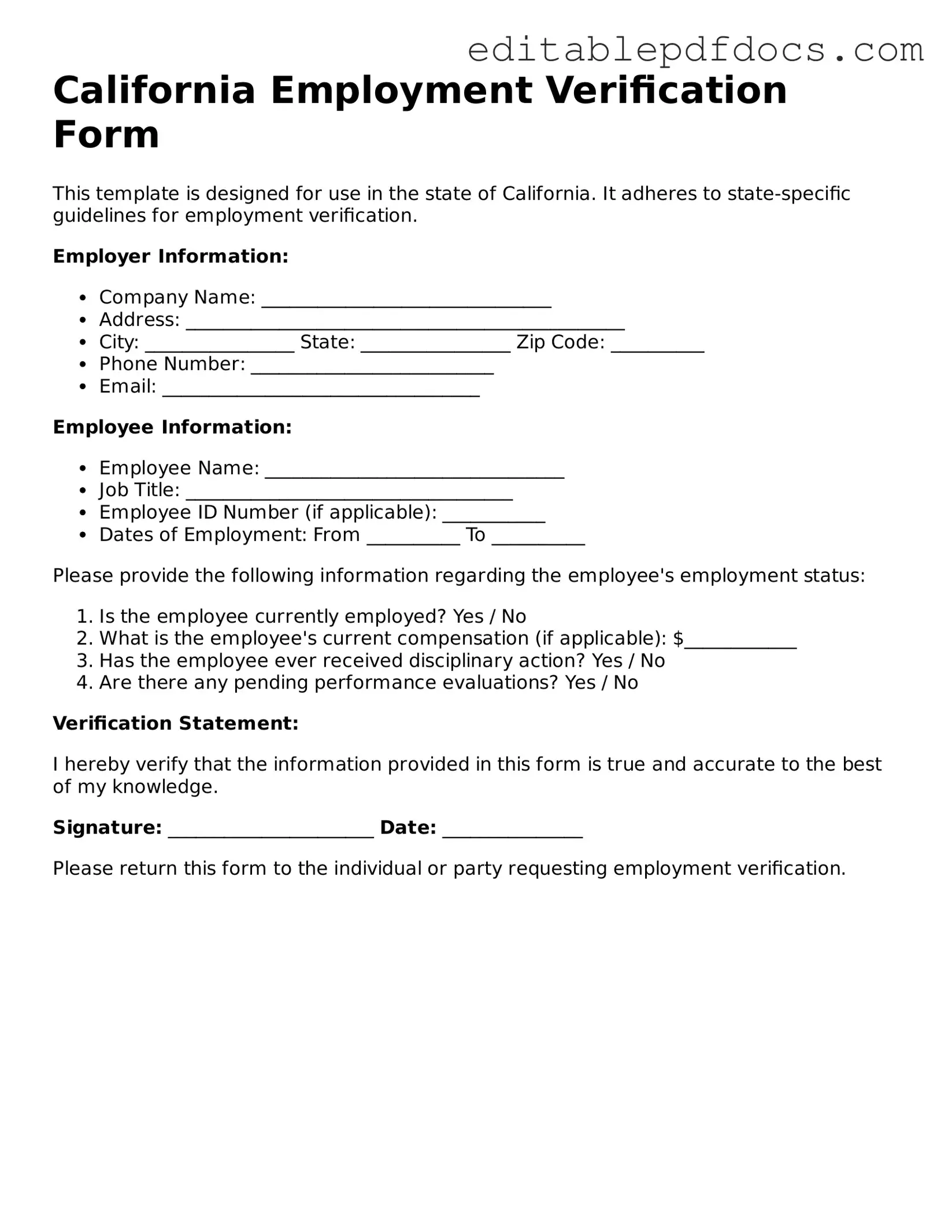The California Employment Verification form plays a crucial role in the hiring process, ensuring that employers can confirm the employment history and qualifications of potential employees. This form typically requires detailed information about the applicant's previous positions, including job titles, dates of employment, and responsibilities. Additionally, it often includes sections for the employer to provide insights into the applicant's performance and conduct during their tenure. The verification process not only protects employers from potential liability but also safeguards job seekers by providing a transparent method for evaluating their work history. Understanding the nuances of this form is essential for both employers and employees, as it lays the foundation for a fair and informed hiring decision. As California continues to evolve its labor laws, staying informed about the requirements and implications of the Employment Verification form is more important than ever.
